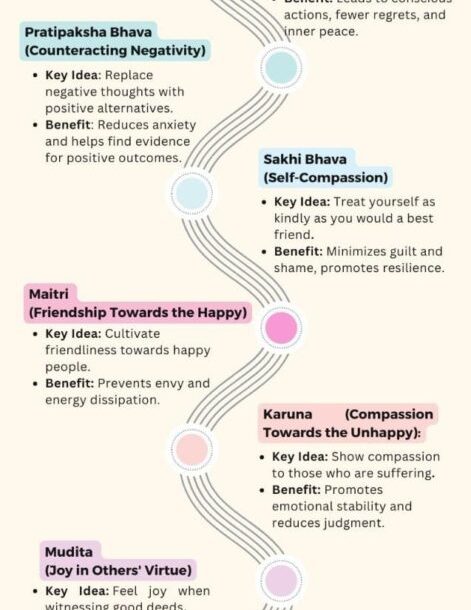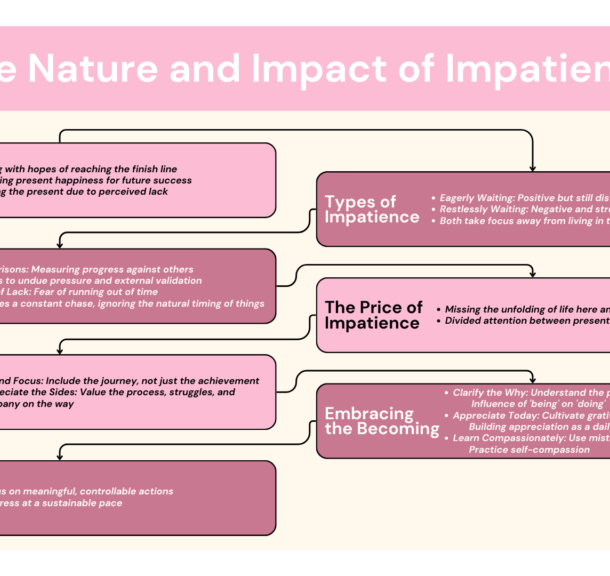
I was a meditator first and, a coach next. So I’m always drawing parallels between the two different yet strikingly similar journeys of self-discovery.
I’ve been reading about Buddhism for a while now and completed a 10-day vipassana course a while back that reignited the spark of how these two processes are so similar at their very core.
In Buddhism, meditation can broadly be divided into two parts – Shamatha and Vipassana. Shamatha means stopping compulsive thinking or habit energies to calm the mind and Vipassana- Insight Meditation is the art of observation to see things clearly and better.
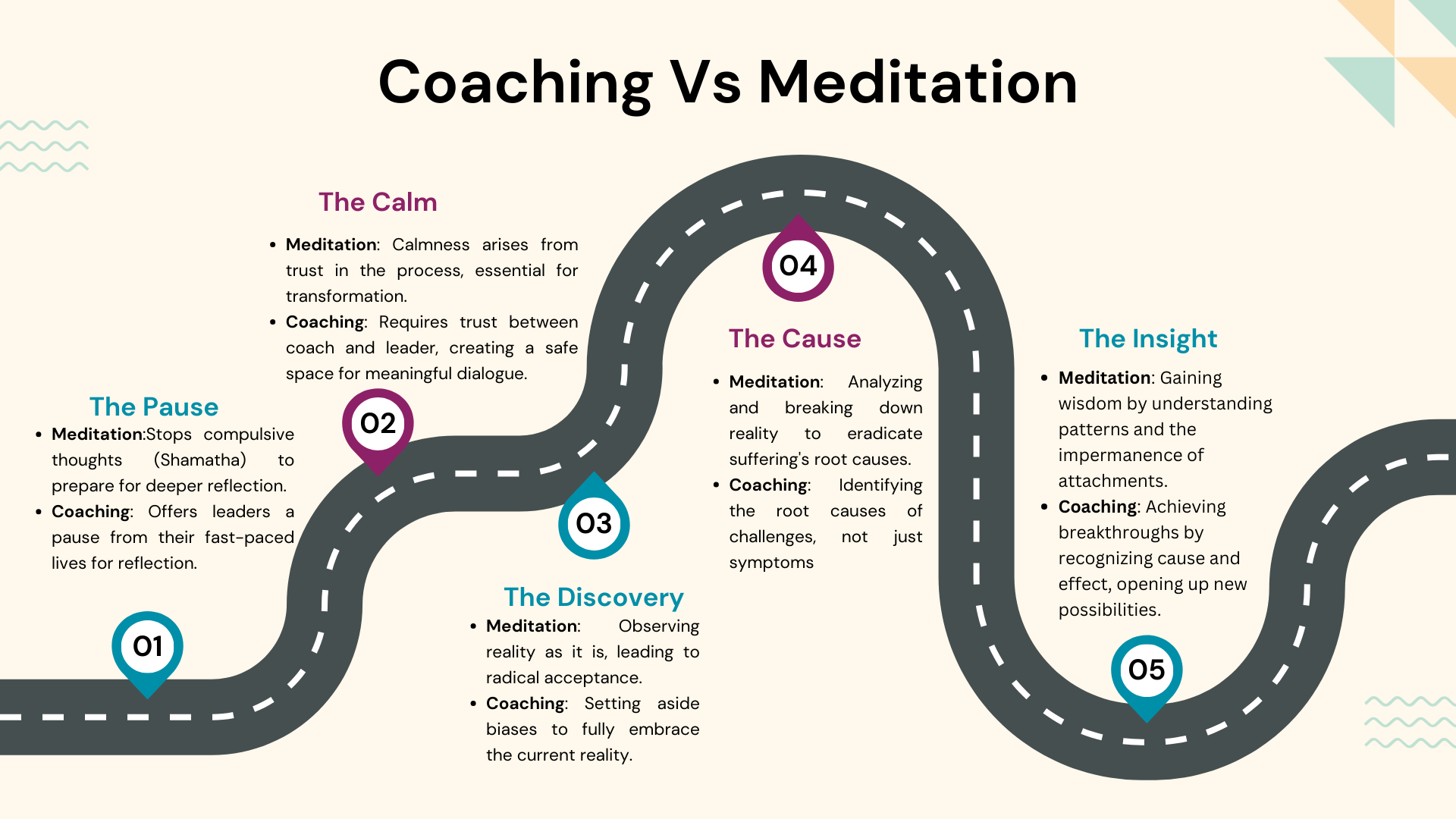
A common misconception about meditation is to believe that its only goal is to find calmness and peace. But that’s a very limiting and narrow view of a powerful approach. Concentration and calmness are gifts of meditation, but they are only a small part of the whole. The larger benefit meditation offers is clarity – it helps us observe things better, analyse them deeply, and garner insights. This potent and clarifying aspect of Buddhism is known as Vipassana.
Passana means “to see.” The prefix vi means two things: “apart” and “through.” Vipassana then means breaking things apart and analytically separating them into their components. Additionally, it means soaking awareness in each component till you see their deepest nature or underlying truth.
Coaching is similar in many ways, here’s how:
1.The Pause – One cannot go into deeper states of meditation without first stopping the compulsive thought processes and behaviours. A coaching conversation in many ways offers leaders that much-needed pause from their usual fast-paced lives of hustling.
From continuously doing and firefighting, coaching offers a pause (or Shamatha) from business as usual to take a moment and reflect. Coaching conversations allow leaders to pause and reflect on their thoughts, connect with their feelings, habit energies or autopilot ways of acting and reacting to people and situations.
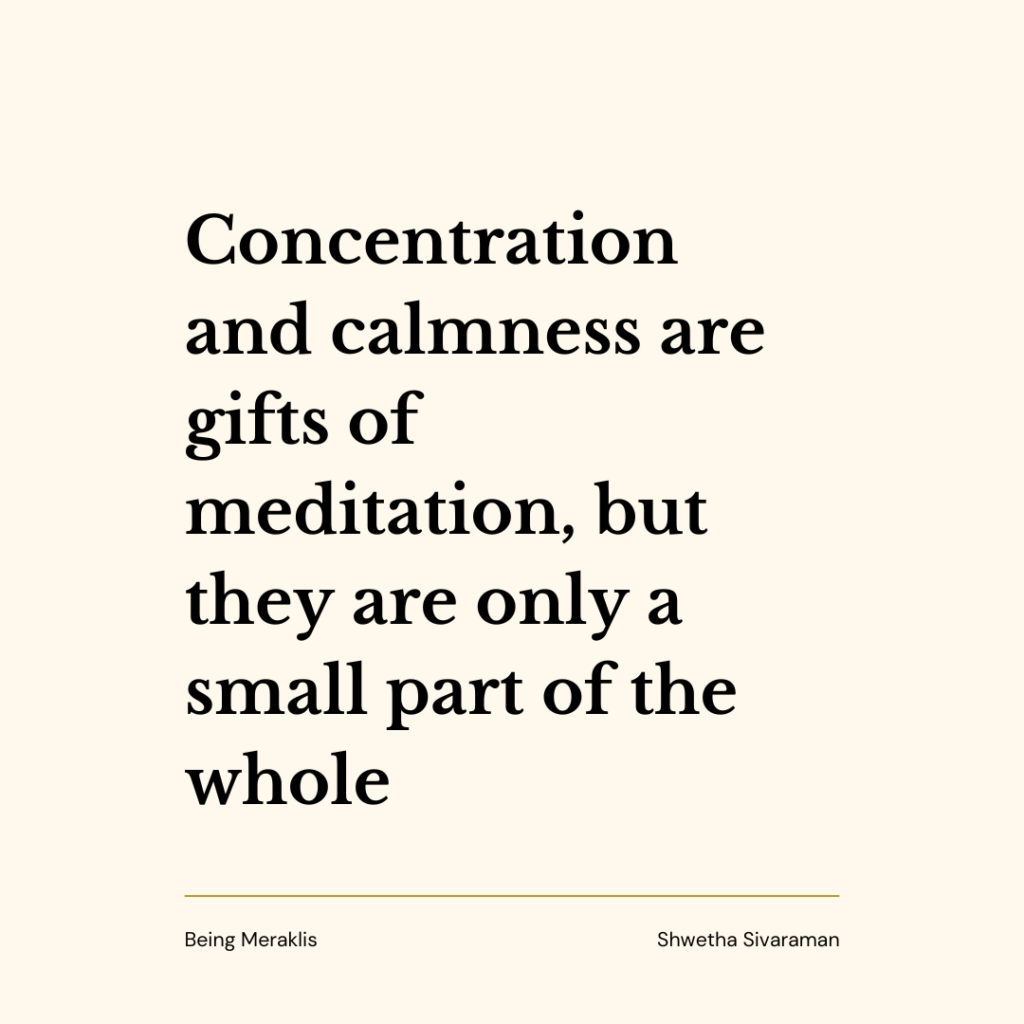
2. The Calm – If the meditator is unsettled by the pause, finds it unpleasant, or questions the efficacy of the process they’re about to enter, they cannot reach this state of calm. The calm comes when there is trust in the process and the meditator is ready to comfort whatever emerges from the practice. No healing or transformation is possible until we come to this state of calm and centred presence. Until then we are in survival mode. Only from this quietitude is true reflection and recognition of ‘what is’ becomes possible.
Similarly, coaching requires leaders to be prepared for the process and the coach to create that safe non-judgmental space. Only when a rapport is built on a strong foundation of mutual respect and confidence in each other’s ability to achieve the shared goal is there enough trust between the two to allow meaningful conversations to happen? This brings in the calm the leaders need to put their thoughts together and reflect on their journey so far and the path they want to take moving forward.
3. The Discovery – Once you stop and find that calm, the transcendental part of meditation begins. Similarly, the transformational path of coaching begins here.
In meditation, we start observing reality as is, without resisting, ignoring or denying the unpleasantness. We see without distortions or filters. At this stage, we find radical acceptance to see what is and take total responsibility for where we are.
Similarly, in coaching the stage of discovery is truly seeing current reality as is. This means setting aside biases, preconceived notions, assumptions and deceptions to truly look at what is and fully come to terms with it. It’s not just mere acceptance but wholeheartedly embracing the current reality and what it entails.
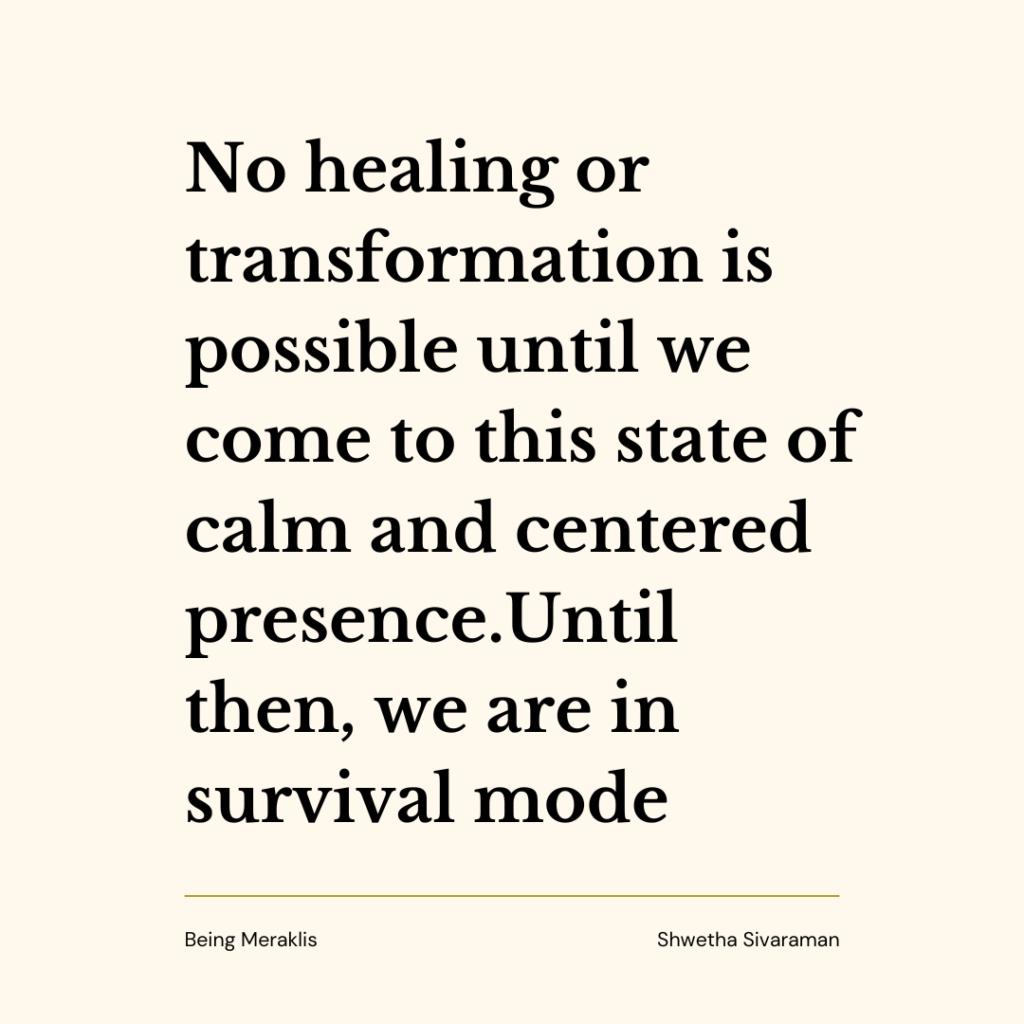
4. The Cause – The art of Vipassana is to truly observe what’s happening and break it down to its core components or true essence. The practice offers purification through pure observation and eradicating the very source of suffering – craving, aversion, and ignorance.
In coaching parlance, this corresponds to reviewing the present circumstance and breaking it down to discover the root cause of it. Until we identify the root cause of the friction experienced in our current reality, we will only be treating symptoms and leaders don’t need coaches for that. Through coaching, leaders can peel the layers and delve deeper to identify the real cause of the obstacles or stumbling blocks on their path, making way for transformation.
5. The Insight – Insight is the fruit of vipassana – finding true wisdom or Prajna. By recognising patterns of craving, desire, attachment and suffering, we start to observe the truth of the impermanence of this cycle and obliterate the root of craving, identity, and attachment. Gradually and incrementally.
In coaching, this is that Aha moment or breakthrough point when leaders can look deeply, draw patterns and parallels, understand cause and effect, and see what was holding them back and what is a way forward. This is where possibilities emerge and a conscious choice is made with renewed resourcefulness to walk the path ahead.
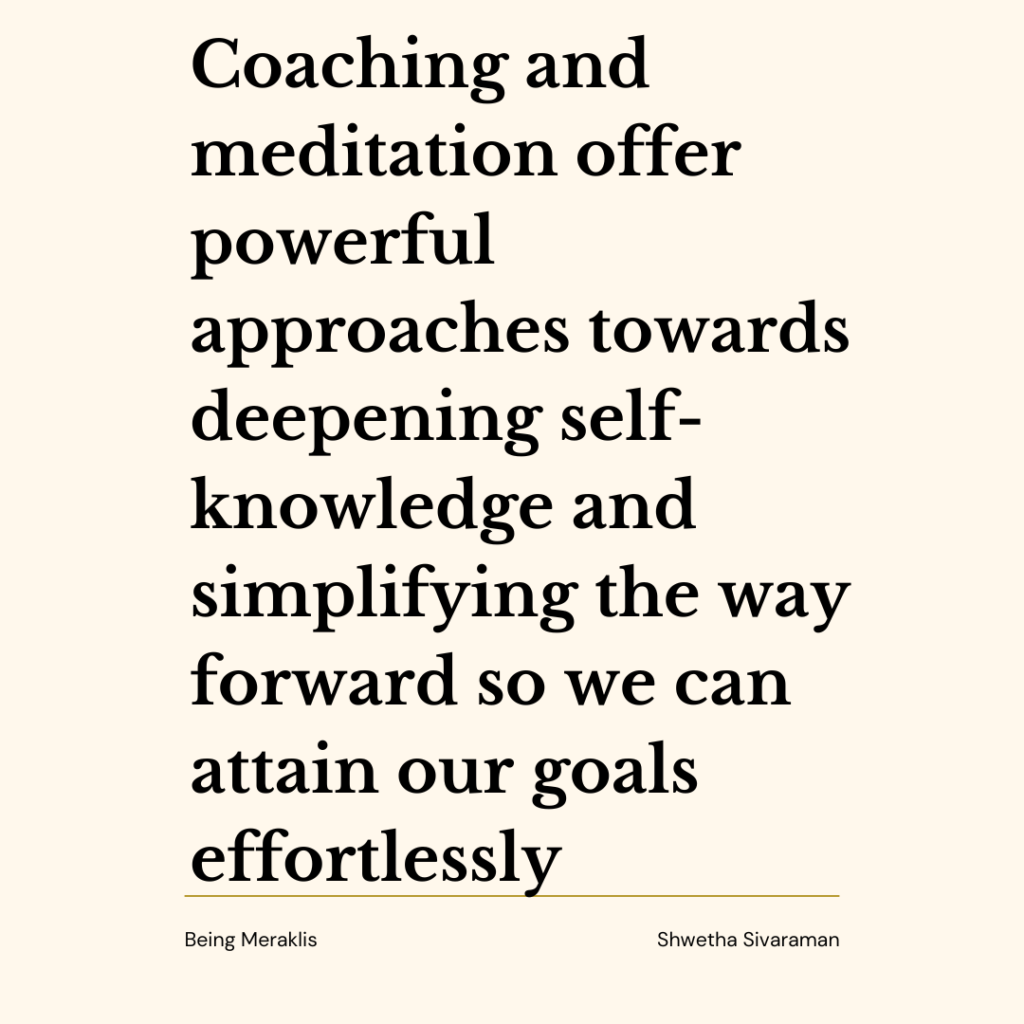
Meditation and Coaching are both powerful approaches towards deepening self-knowledge and simplifying the way forward so we can attain our goals be it spiritual, professional, or personal effortlessly. Both are not one-time fixes and are conscious journeys we must take to keep making incremental progress towards being our best versions.
Have you observed similar patterns in other healing and self-discovery modalities? Do share the trends you notice in the comment section below!

